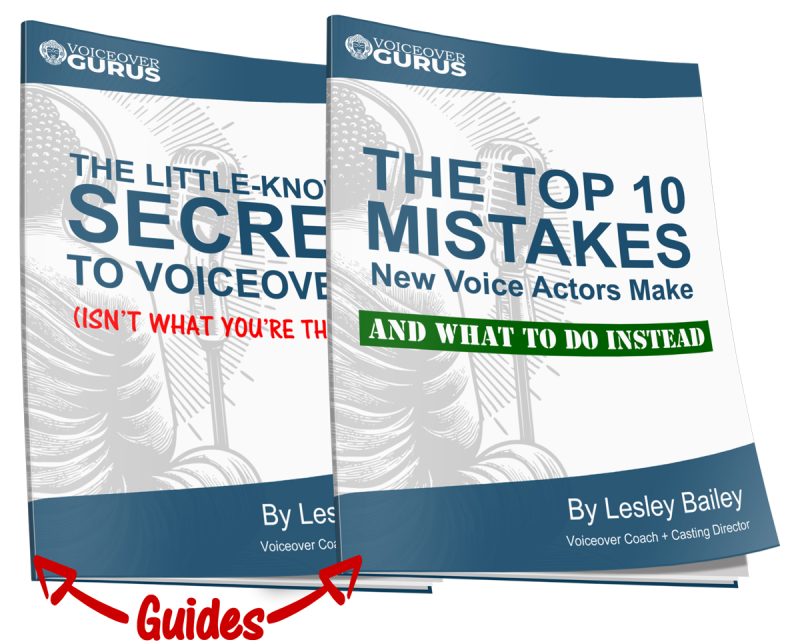The tools we use for voiceover success all come from what we ALREADY DO. That’s right; you already have what it takes to book more voice over jobs! This is because getting voice over work mostly comes from being BELIEVABLE. There are of course many nuances that also win you jobs on top of this, such as sounding confident, engaged, empathetic, personal, interested, etc….but even all of those have no foundation unless we believe you. So, how to be believable? Use what you already use in real life, where you are unequivocally believable because you’re the author of those words. Unless, of course, you’re a liar J
To be clear, when we use the word “rules”, we are speaking in very general terms. There are general ways that the majority of us express ourselves. We do deviate from this all the time as we are complex creatures with micro-expressions that identify us as individuals. However, in the beginning stages of learning voice acting, you will want these general rules to lean on until you’re confident that your own instinct can run the show. These rules can be broken down into many categories such as timbre, pitch, inflection, volume, pacing, etc….and for all you music geeks out there who will certainly find the flaws in my definitions, just know that this is for the layperson only. Here goes:
First up is PITCH, which gets confused with all sorts of things such as intonation, inflection, timbre etc. For our purposes of simplification (layperson!) we’ll just discuss it as how high or low our voice goes. Another way of saying this is the difference between speaking with the deepest sound your voice can make or the squeakiest brightest most “up” place. In general, even though it’s not necessarily pitch they’re using to make this sound, when we think of deeper pitch it’s similar to James Earl Jones, and a higher pitch would be someone like Sally Struthers, Jennifer Garner, or Anna Camp. But back to how you can use it as your tool in adding authenticity to your voiceover audition. Here’s the general list of intentions/emotions that has us using a DEEPER, LOWER pitch more often than not: confident, authoritative, powerful, sincere, honest, certain, serious. There are probably many more words. For our HIGHER, LIGHTER pitch, we are often expressing excitement, enthusiasm, positivity, friendliness. Again, you will break these rules based on context and character and other things, but they’re good to have in your back pocket when you’re just not sure where to go.
Now, we utilize pitch as well when we are speaking in terms of INFLECTION or INTONATION. I spent way too much time researching the difference between the two, and I’m sure someone will chime in eventually, but anyway….they’re often used interchangeably by many “experts.” The best example of how we use the two and what it sounds like is to imagine how you sound at the end of a sentence. If you’re asking a question you will usually go up at the end of the last word. I say this precisely because if it’s a multi-syllabic word, you need to really remember not to shoot up at one of the earlier syllables because your voice will naturally want to go down towards the end of the word, having it sound like you just made a statement. To prove this to yourself, imagine a question you would ask someone, and make sure the last word contains more than one syllable. Note how you go up mostly on the last syllable of that last word, which leaves the ending of the entire sentence sounding like a question. Similarly, if you’re making a statement you will point your inflection downwards at the end of that last word. Imagine simply closing up a storybook and saying “The end.” You’ll probably go down on the word “end”, but just as important is recognizing that you’ll go UP on the word “the” to avoid sounding monotone. This is real life.
Our volume levels also reflect real life, as we vary its levels based on the situation, emotional undertones, background noise, amount of people we’re addressing, and even how close or far we are from the person(s) we are speaking to. Let’s address emotion first: If we are being thoughtful, introspective, sincere, reflective, or empathetic we will most likely speak at a slightly quieter volume level than we normally do. On the other hand if we’re excited, angry, or confident we often bump up our level of volume and get noticeably louder. It goes without saying that the closer we are to someone the less volume we need, and vice versa with persons further away from us. When you’re not sure what the script set-up is for that scenario, go with averages (speaking to one person who is about a yard or two away from you) and rely on the normal amount of volume you use for everyday situations.
Pacing follows a similar predictable pattern. When we’re excited we talk a bit faster, when we’re in a more thoughtful place we slow down. Another more nuanced aspect of pacing is our use of pauses. In real life we don’t pause that much, and when we do it’s usually very very briefly and for either only grammatical or dramatic reasons. Overdoing pauses either in frequency or length of time results in an everyday commercial or elearning video sounding like a Shakespeare performance.
The bottom line is to use what you use in real life. Go listen to an interview of….anything. Listen to how this person, who is authoring their own words, naturally uses their inflection, pacing, volume, etc….Listen to how they emphasize certain words over others. Listen. Observe. Repeat.


 Hi! I’m Lesley Bailey. I’m an award-winning Casting Director, Voiceover Coach, Demo Producer, and Consultant with over 30 years “in the trenches”. I love helping voice actors bring scripts to life with authenticity and confidence.
Hi! I’m Lesley Bailey. I’m an award-winning Casting Director, Voiceover Coach, Demo Producer, and Consultant with over 30 years “in the trenches”. I love helping voice actors bring scripts to life with authenticity and confidence.